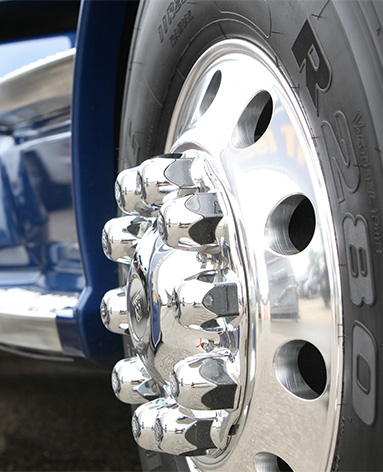Novemba . 25, 2024 13:11 Back to list
brake drum reconditioning
Reconditioning Brake Drums A Comprehensive Guide
Brake drums are crucial components of a vehicle’s braking system, particularly in older models and those equipped with drum brakes. Over time, these components can wear down due to constant friction, making reconditioning an essential maintenance task. This article delves into the importance, process, and benefits of brake drum reconditioning.
Understanding Brake Drums
Brake drums are circular metal housings that work in conjunction with brake shoes. When the brakes are applied, the brake shoes expand against the inner surface of the drum, creating friction that slows the vehicle down. Like all mechanical components, brake drums experience wear due to heat and friction, which can lead to a host of braking issues if not addressed promptly.
Why Recondition Brake Drums?
1. Cost-Effective Reconditioning brake drums is often less expensive than purchasing new ones. With the right tools and expertise, you can restore your existing drums to a like-new condition.
2. Environmentally Friendly Instead of disposing of old brake drums, reconditioning them reduces waste and the demand for raw materials required for new parts.
3. Safety Worn brake drums can cause unsafe driving conditions, such as reduced braking efficiency or uneven braking. Reconditioning ensures that your brakes perform effectively, enhancing road safety.
4. Performance Restoration New brake drums can offer improved performance, but reconditioned drums can also restore your vehicle's braking capability. This is particularly true if the drums have been machined correctly to restore their original specifications.
The Reconditioning Process
Reconditioning brake drums involves several steps, including inspection, machining, and finishing. Here’s a closer look at the process
brake drum reconditioning

1. Inspection Start by removing the brake drums from the vehicle. Inspect them thoroughly for cracks, warping, and excessive wear. If the drums are excessively damaged, reconditioning may not be feasible, and replacement may be necessary.
2. Machining Machining involves using a lathe to resurface the inner diameter of the drum. This process eliminates grooves and imperfections, creating a smooth surface for the brake shoes. The goal is to achieve a uniform thickness and ensure that the drums meet the manufacturer’s specifications.
3. Cleaning After machining, the drums should be cleaned thoroughly to remove any debris, dust, or metal shavings. This ensures that the newly machined surface is free from contaminants that could affect braking performance.
4. Finishing Some reconditioning processes may include painting or applying a protective coating to the drums. This not only enhances the appearance of the drums but also helps prevent rust and corrosion.
5. Reinstalling and Testing Once the brake drums have been reconditioned, they can be reinstalled on the vehicle. It’s essential to ensure that all components, such as brake shoes and wheel cylinders, are in good condition. After everything is reassembled, conduct a brake test to ensure proper function and performance.
Tips for Successful Reconditioning
1. Check Specifications Always refer to the vehicle’s service manual for specifications regarding drum thickness and machining tolerances. Reconditioning beyond manufacturer limits can lead to brake failure.
2. Use Quality Tools Invest in a quality brake drum lathe and have the necessary cleaning and finishing tools available. Additionally, a thorough inspection requires proper lighting and tools to assess the drums accurately.
3. Seek Professional Help If you’re unfamiliar with brake systems or lack the necessary tools, consider hiring a professional mechanic or brake specialist. They possess the expertise and equipment required to perform the job safely and effectively.
Conclusion
Reconditioning brake drums is a practical, cost-effective, and environmentally friendly solution for maintaining your vehicle’s braking system. By understanding the reconditioning process and following proper techniques, you can ensure that your brakes operate efficiently and safely. Regular maintenance and inspection of your brakes not only improve your vehicle's performance but also enhance your safety on the road. Whether you choose to tackle this project yourself or enlist professional help, keeping your brake drums in optimal condition will contribute to a smooth and secure driving experience.
-
Brake Drum Man - High-Quality Drum Brake Drums & Brake Shoes for Reliable Performance
NewsJun.24,2025
-
High-Quality Brake Drum Kamaz – Durable Drum Brake Drum & Brake Shoe Replacement
NewsJun.10,2025
-
High-Quality Brake Drum Liza for Drum Brake Systems - Superior Durability and Performance
NewsJun.10,2025
-
High-Quality Brake Drum Kamaz – Durable Drum Brake Drum & Brake Shoe Solutions
NewsJun.10,2025
-
Durable Kamaz Brake Drums High-Performance Truck Parts
NewsJun.09,2025
-
Premium Brake Drum Maz Kit with Shoes Enhanced Braking
NewsJun.09,2025
